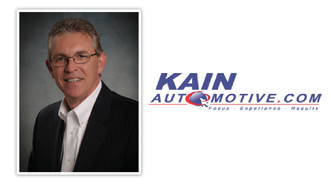Kain Automotive: Simple Site Conversion Tips for a Better ROI

I often find dealers focus on digital marketing to drive traffic to their websites, spending a lot of money trying different things, not knowing what is and isn’t working. However, in many cases, the focus on website traffic causes dealers to miss the more important metric, and that is their site’s conversion rate.
I think many dealerships have the whole thing backwards. Why spend money to drive traffic to a site that doesn’t convert? While more site traffic doesn’t necessarily mean more leads, a higher conversion rate does. Moreover, it is easier and a lot cheaper to improve the conversion rate than to increase sustainable site traffic.
The conversion rate is the percentage of site visitors you persuade to take action. It is arguably the most important metric. It is also the most widely misunderstood, miscounted and overlooked statistic. Your analytics will mislead you because the analytics do not know the result of the conversion and if it was a true opportunity. For example, someone calls the 800 number on your home page to find out if his or her car is ready to be picked up from service. Your website provider will count that as a conversion, but is it? The answer is no.
The first question you need answered is, “What is my conversion rate?” How well does your site cause a customer to engage and follow a path to a conversion, or more specifically, a lead? Determining your true conversion rate requires good process and CRM usage to track the actual number of contacts made for the purpose of selling cars, scheduling service, and selling parts or body shop orders.
The average conversion rate seems to be in the 3-percent range. A dealership with 5,000 site visitors per month would get about 150 leads per month. The good news is small improvements make a big difference. If that same dealership can improve its conversion rate to 5 percent, the count grows to a whopping 250 leads.
Most dealers get enough traffic. They need a better conversion rate to maximize the dollars they have already spent. Some dealership websites defy the averages with conversion rates north of 10 percent! Just think about your site traffic and what a 10-percent conversion rate would do for your business and ROI. Here are three things you should work on to impact your site conversion.
1. Communication Boosters
Simple things like phone numbers, click-to-call, live chat and your address help increase site conversion. The more ways you offer visitors to engage with you, the more leads you will get. Even then, it takes correct processes to identify the true leads. If your toll-free number rings to the switchboard and is dispatched from there without monitoring, you are missing conversion-tracking opportunities. It is a challenge, I know. Nevertheless, those calls that are true opportunities need to be tracked and measured.
One common problem is visitors have a tendency to dial the top number on the site regardless of the reason for the call. Try labeling the sales number as the “Sales Hotline” or “Internet Hotline,” and label the other numbers as the “Main Switchboard” and “Parts and Service.” This usually helps reduce the calls that must be transferred by the team members answering the Sales Hotline.
2. Shopping Tools
Why do shoppers visit your site? What are they looking for? What do you want them to do on your site? Answer these questions and you will know how to set up site navigation and home page layout. The best-converting dealership sites I’ve worked with subscribe to the Steven Krug philosophy, “Don’t Make Me Think.” Krug is the authority on site usability, and if you haven’t read his book, you and everyone else who has something to do with your website should.
Dealership sites that convert in the double-digit range have ease of navigation and compelling calls to action. The home page has everything a consumer would want to find, and most of the calls-to-action click through to a form or a clear path to a form. The most important forms are inventory, sales specials, credit application, trade-in tool, service appointment and service specials.
Of course, conversion goes beyond the home page. Pricing, pictures, descriptions, credit applications, reviews, staff pages, and customer experience all play a part in a healthy conversion rate. Even keyword content aids conversion because it brings visitors with a specific goal in mind to your site.
3. Metrics
Measure website visitor traffic and conversion daily. Track the effectiveness of each form on your site. Get rid of the poorly performing forms and put the high-performing forms in front of as many visitors as possible. Finding your peak conversion rate will take some experimentation and a little time. Tools like Google Website Optimizer and Optimizely can help with the forms, but you will still have to track and sort phone ups with training and CRM use. Finally, set goals for your site conversion, both short-term and long-term. Find the easy wins and start working on the improvements that may take a little more time to develop.
Once you have your site converting better, you’ll feel better about those advertising dollars you are spending to drive traffic, and you’ll like the return on your time, effort, energy and of course the money.
This column was written by Greg Wells, senior partner at Kain Automotive. To view the original post, see here.


